It’s the morning in Tokyo and you decide that you’re going to start your journey early to make the most of your day. The streets are already bustling with people walking briskly along the sidewalks. You head for the station along with the crowd, but an unbelievable sight awaits you: The station is unbelievably packed! The craziness of Tokyo rush hour isn’t a little-known fact. You’ve probably seen pictures and videos of platform attendants pushing commuters through the closing doors even though it seems like it can’t fit any more people.
Commuting with large crowds is often inevitable; after all, Tokyo rush hour trains are infamous for turning commuters into cans of sardines. But there are definitely ways to help make your commute relatively more pleasant and possibly even comfortable. So, here are my top tips to help you out — especially if it’s your first time.
Also read: 10 Affordable Airbnbs in Tokyo for Budget Travellers
Tips for surviving Tokyo rush hour train rides
1. Go for the shortest queue
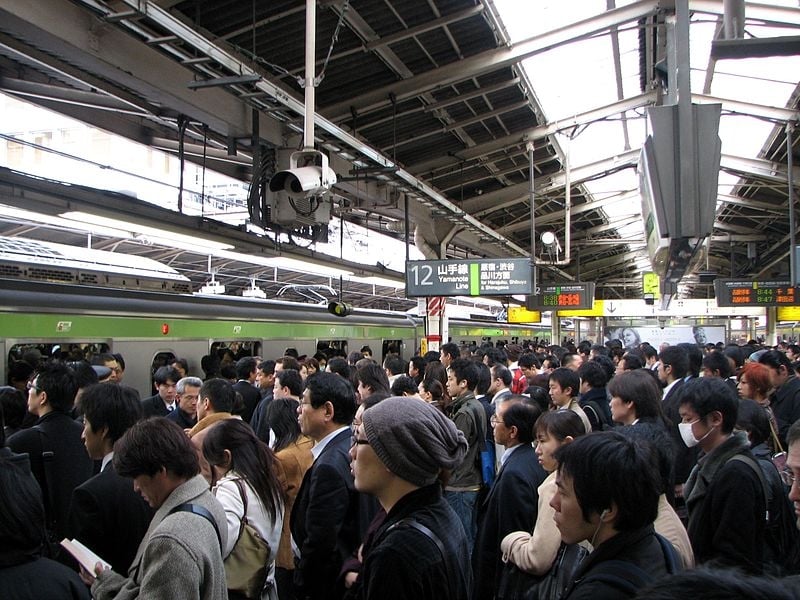
Image credit: Chris 73
Your battle starts even before you board the train. On the platform, boarding queues form on both sides of a train door. Head for the shortest queue you can find, the best scenario is being able to find a queue without anyone at all. Two people in front of you should be the maximum; any longer and you’ll probably find yourself having a hard time getting onto the train. If this happens though, you’ll just have to wait for the next train, which should arrive in a few minutes.
2. Keep your bag in front of you
Crowded trains usually mean a possibility of pickpockets. However, in Japan, most people keep their bags in front of them to save space and to not inconvenience others. While some people may decide to keep their bags between their feet, it’ll probably be difficult to reach for those once the carriage is packed during Tokyo rush hour. Keeping your bag in front of you also acts as a barrier against the next person in front of you for both your safety and comfort.
Also read: 12 Most Interesting Train Stations You Can Find in Japan
3. Grab onto a handrail or handle
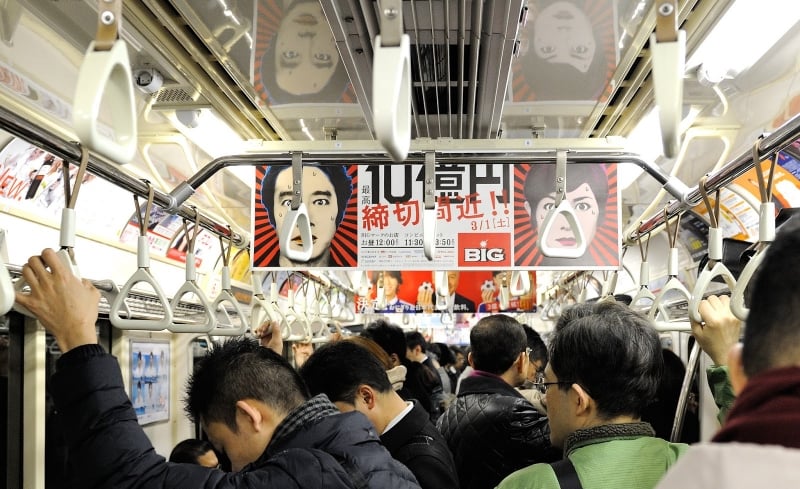
Image credit: Tim Adams
In a crowded fast-moving train, maintaining your balance is very important. Despite what you may think, the people squished around you aren’t reliable wedges to keep you upright. In fact, if someone loses his or her balance, the next person too will lose balance, and then the next one… you get the idea. So, don’t try to test your balance. Hold on to something (not someone!) and be safe.
4. Be like water
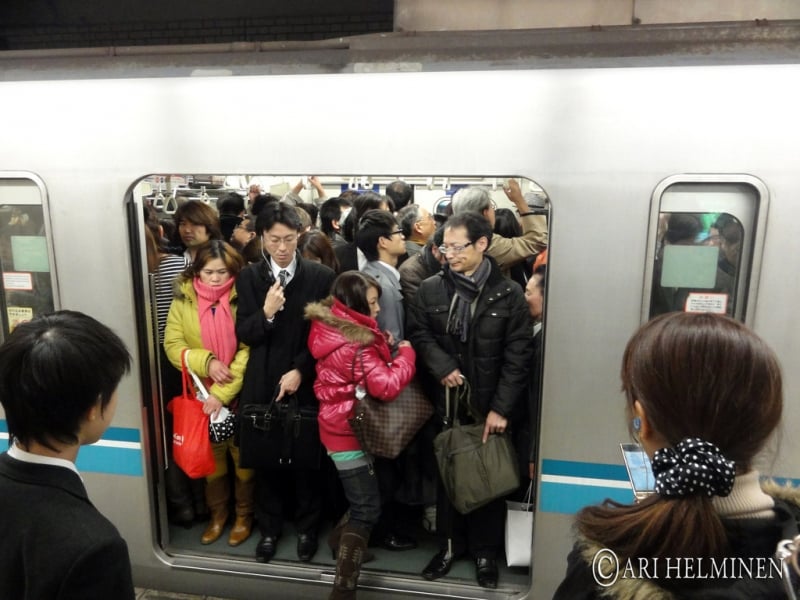
Image credit: Ari Helminen
When you’re on a crowded train during Tokyo rush hour, you’re no longer solid matter. You’re like water that can fill any space — because that is exactly what is going to happen. The commuters around you will squeeze into any little space there is to allow more people to board, so you should, too. If someone is trying to board or get off, you may also find yourself getting pushed in all directions. The best thing to do then would be to balance the allowance of ease of movement, and the need to have at least some breathing space in front of you. Don’t get squeezed by the crowd to the point it hurts; stand firm when you’re at your (reasonable) limit.
Also, if you’re right at the doors but haven’t reached your stop, it’s alright to get off and stand to the side to allow others to get out. Just make sure you stand at the front of the queue waiting to board so that you can easily get onto the train again.
5. Head for the middle of the carriage
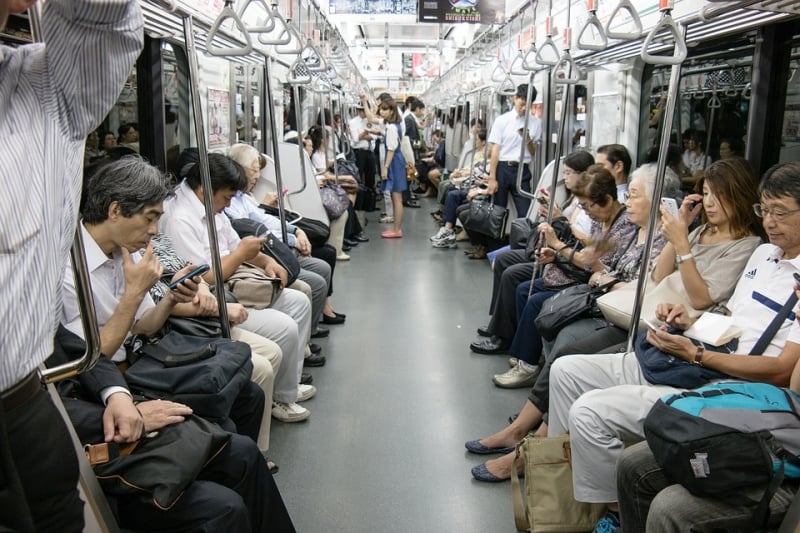
To be honest, most people tend to stick close to the train doors. You’ll probably notice that the crowd standing in the middle along the seats is a lot thinner. Therefore, if possible, head for the middle of the carriage or at least near it, so that you’ll be able to have just that little bit more breathing space. If getting there isn’t possible when you board, try to head for it during the crowd movement when commuters get off and on the train at the next station.
6. Make use of the overhead shelves
If you’ve managed to get yourself to the middle of the carriage, you can make use of the metal shelves above the seats by putting your bags there. Not only will your aching shoulders thank you, but this also helps ease up the space around you, especially during Tokyo rush hour.
Although, make sure to only use the shelves when you’re standing in front of the seats. If you’re fortunate enough to get a seat, take your bag down so that the next person can use it. Also, be careful that nothing falls out of your bag when you’re putting or taking it off the shelf to prevent any injuries or other unpleasant experiences.
7. See a seat, grab a seat
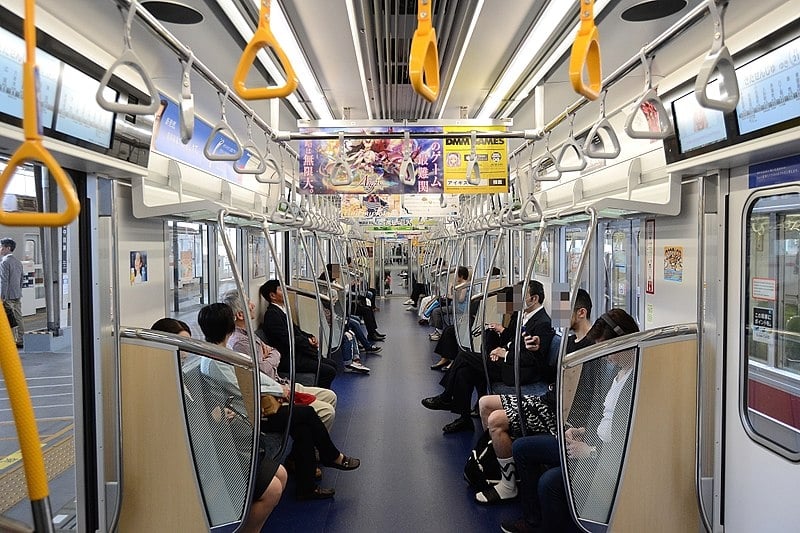
Image credit: Toshinori Baba
Seats are a scarce resource during the peak of Tokyo rush hour, so if the opportunity presents itself, grab the seat. This mostly applies if the seat you’re in front of is vacated (another reason to move to the middle of the carriage). Taking the seat also helps to free up more space so that more commuters can board the train. Don’t forget to take down your bag from the shelf overhead! However, try to avoid priority seats as those are reserved for the elderly, pregnant women, and PWDs.
8. Be firm when getting off
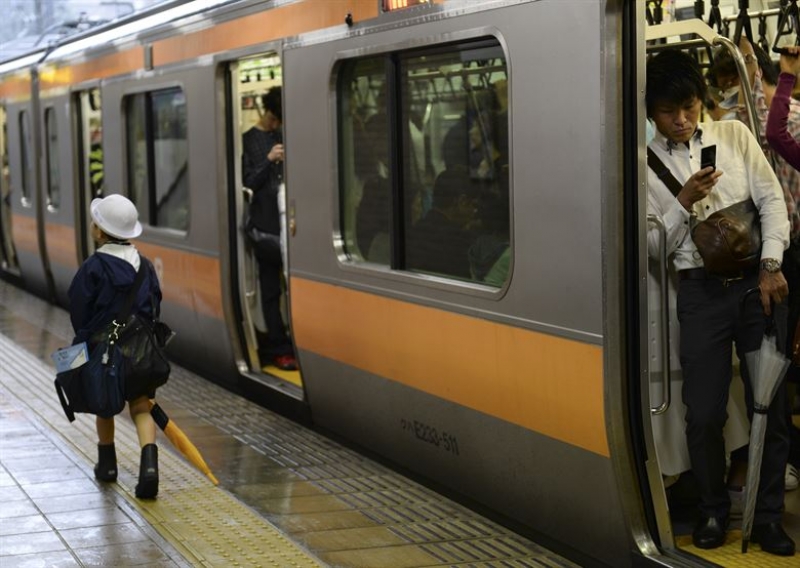
Image credit: Yokota Air Base
You’ve now reached your stop, but you see no way through the crowd or are firmly wedged between people. What should you do? Be firm and give a slight nudge towards the door. Your fellow commuters should get the message and (try to) move aside for you. If there are others getting off, make use of the space cleared up and pass through. If all else fails, give a polite but firm “Sumimasen, orimasu” (Sorry, I’m getting off), and those around you should try to make space for you to pass through. Just make sure to remain courteous and to keep your cool!
Also read: 30 Useful Japanese Phrases You Need to Learn Before Travelling to Japan
9. Opt to walk whenever you can
In some areas, you could actually walk from one station to another that’s closer to your destination. This allows you the opportunity to skip multiple stops and save you more time than you’d expect during Tokyo rush hour! So, make sure to have a copy of a map of the city’s railways, or have your navigation app on at all times. These will help you figure out the distance between stations and help you figure out if that distance is walkable enough for you.
10. Use another line or head out earlier
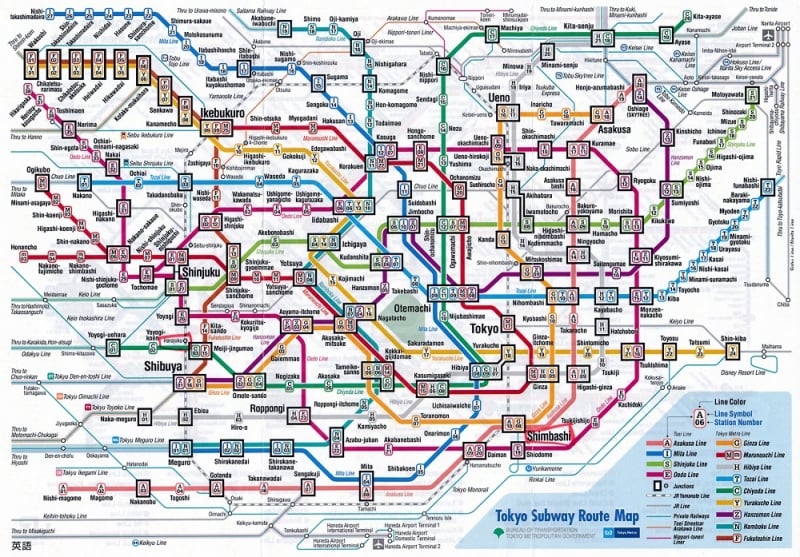
Image credit: JarkkoS
This one’s in conjunction with the previous item. If you happen to be staying in Tokyo for an extended period of time, you may notice that certain lines may be less frequented than others. If there are alternative routes to take to your destination, you can consider trying them out to see which is the least crowded.
Alternatively, if all else fails, you can leave earlier to avoid Tokyo rush hour altogether. Trains are the busiest around 8am to 9am, and 6pm to 7pm. So, if you can, avoid these times for a less crowded ride.
Also read: 14 Common Culture Shocks Foreigners Have About Japan
You’ve survived!
There you have it — some tips to help you survive the dreaded Tokyo rush hour. After all that’s said, the best way to learn is, of course, to experience it yourself, should you be up for the challenge. The more you mingle with the (unpleasantly warm) crowd, the more you’ll get the hang of Tokyo rush hour train rides. And perhaps soon, you’ll be going places easily and comfortably like a true local!




